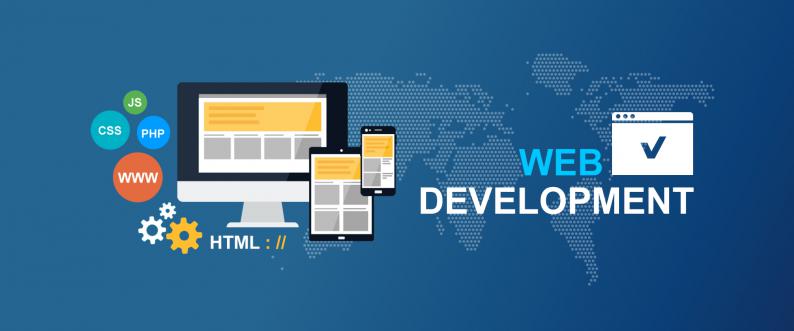Web Development Process: A Complete Guide in 5 Steps
- Website Design, Post by Admin
- Post on 4 February, 2022
There are several steps in the web development process. There’s gathering of information, setting your goals, and creating your website design. A lot of work takes place before your site goes live. While the process varies slightly between projects, the basics remain the same.
Generally, web development is made up of five main parts — defining your goals, planning your website, creating content, website design and lastly, programming. Each of these steps holds an important function in the web development process and must be addressed appropriately to ensure a prosperous and efficient web design. Each customer or site visitor’s needs will vary, that is why professional web development organizations must be able to adapt to meet those needs accordingly.
1. Define your goals
The first step in the web development process is to define the goals for your project. This stage of learning and researching determines what your next steps will look like. The main goal is to get a clear insight of the purpose of your website. Pinpoint what you wish to achieve, and the target audience you want to attract to your site.
Some guiding points include:
- Business details: Define your offering, purpose, unique value proposition, mission, vision, etc.
- Business goals: Set clear, measurable goals for your website to develop the most effective strategy, including the key performance indicators or KPIs you’ll use to measure performance.
- Target audience: Define your target audience and research their preferences, likes, and dislikes, study their online habits, and more to get to know them and their expectations.
- Competition: Research your competition, analyze strengths and weaknesses, and develop a plan to position your brand on the market
2. Plan your website
Building a website without a plan is like constructing a building without blueprints. Some elements may end up in the wrong place and some features are overlooked. And a possible miscommunication between website builder and client may arise. Planning your website ahead of time will give you a clear direction and control missed deadlines and backtracking. Define your website’s layout, from landing pages to product pages, key transformation points and more.
Consider creating the following:
- A sitemap: A sitemap is a bird’s eye view of your site that determines the list of pages, their placement and relationship to each other on the website. Creating a sitemap helps define and organise your web content, allowing your strategist and designer to go deeper into planning the look, feel and functionality for each page.
- A wireframe: A wireframe is the layout of each page of your site. It outlines the elements and content, from headlines to CTAs and subscription boxes. The wireframe should cover both desktop and mobile versions.
This stage of website development will help you plan your transformation funnel. And at the same time, guide you in crafting an effective customer journey for each page of your website.
3. Content
Your website content is one of the most important components. Poor content will not only fail to get in traffic but can also drive away potential clients. The content needs to be relevant, intriguing and must take benefit of SEO or SEM practices. These will help keep traffic flowing towards the site. Your website content is used as a “call to action” for a product. CTAs aim to inform consumers, entertain and attract a following and to make a website standout. Consider the content to be a voice speaking to the reader
4. Design
Website design is the second most important part of the website formula. Because is what the reader first notices when they land on a page. A crowded, jumbled, or irrelevant web design will repel potential customers and create logistics issues. Your target audience is one of the key factors taken into consideration here.
It is important to note the basics of good design principles. Hiring experts who are knowledgeable about the latest design trends will be of great help. They would understand exactly what your target audience needs. Therefore, they can produce a design that appeals to your target audience. This stage includes a lot of reviewing and tweaking of the mock-ups until both client and designers are satisfied with the design.
5. Programming
Programming is the tough part of any website design; it will require a thorough knowledge of sophisticated computer applications and algorithms. Your site’s programming is a vital part of web design. It needs to allow the page to be user-friendly by uploading the proper codes on the page.
This may require media plug-in applications or bit-mapped imaging onto the page. Even the smallest of errors in the programming could spell disaster for any web page. After you’ve established the program, an integral part of this entire procedure is website testing. Run a series of tests to make sure that all your site’s features are working properly. It will be good to engage the services of a professional web developer if possible.
By understanding these basic principles and being able to utilize the knowledge effectively, a web design team with a professional eCommerce web designer can drive traffic to a business website easily and creatively. The goal of creating a web page is to generate traffic and turn it into revenue. Simply for this reason, promotion is the key to success.
The perfect webpage will employ the latest marketing techniques, the best design, top quality content and the most customer-friendly site. Digital marketing is the wave of the future, and good quality web pages can be the making of any business. Let professionals create successful web pages that will help propel your business.


